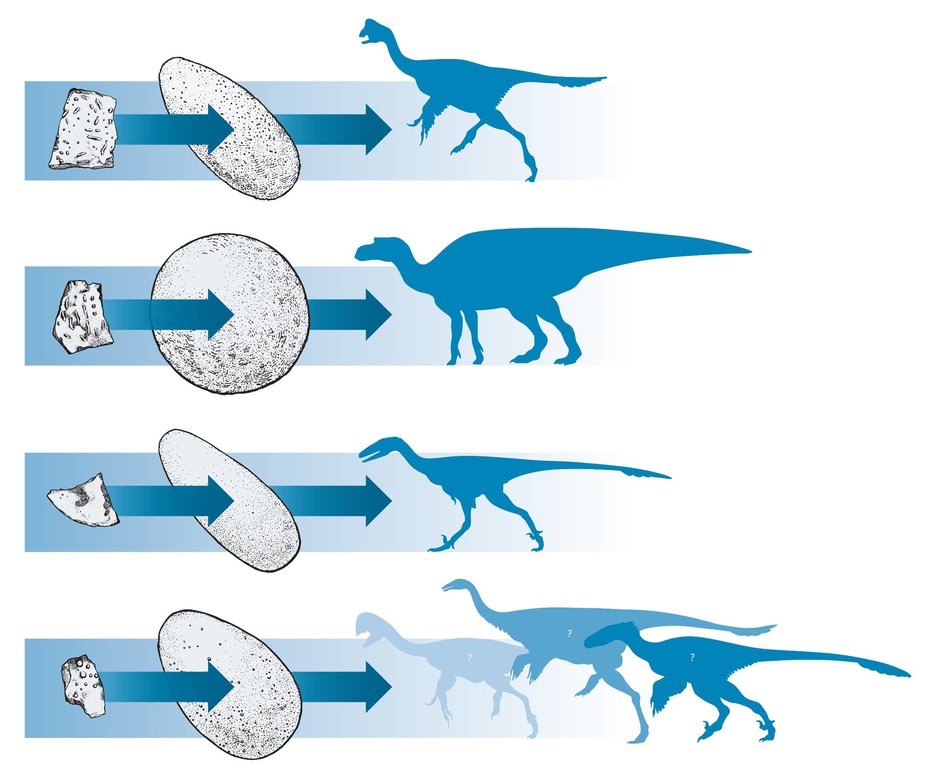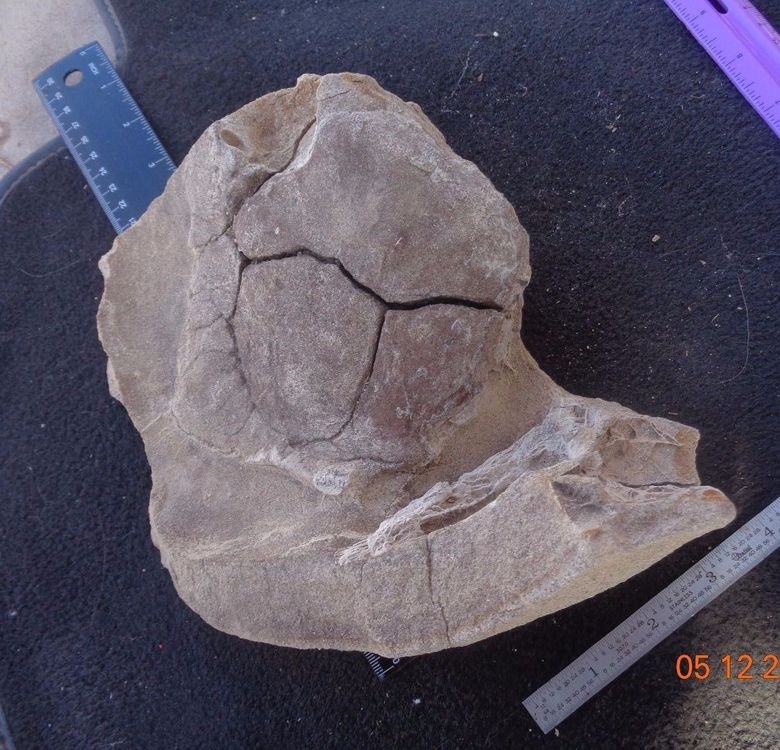
A GUIDE TO DINOSAUR EGGS
Dinosaur eggs are fascinating and important fossils which allow us insights into the reproductive biology and behaviour of dinosaurs. Whole eggs are rare and clutches of eggs rarer still, however dinosaur eggshells are relitively common finds in many parts of the world. Dinosaur eggs come in many sizes and they can range in shape from sherical to elongated. Dinosaur eggs can be found all over the world, however a large proportion are found in Asia and the vast majority date to the Late Cretaceous Period.
Classifying Eggs
In normal Taxonomy we classify animals by family, genus and species, where as eggs have their own classification system and are classified by oofamily, oogenus and oospecies (this is known as parataxonomy). Dinosaur eggs are classified based on various characteristics, including their size, shape and the type of eggshell they have.
The main categories of dinosaur eggs include:
- Spheroolithidae: These eggs are spherical and are associated with hadrosaurs.
-
Prismatoolithidae: These eggs belonged to troodontids.
-
Dendroolithidae: These eggs most likely belong to Therizinosaurs.
-
Megaloolithidae: These eggs are associated with Titanosaurs.
-
Faveoloolithidae: Their association is unknown but they may belong to sauropods.
-
Elongatoolithidae: These eggs are elongated and are associated with oviraptorids.
-
Dictyoolithidae: These eggs are assocated with unknown theropod dinosaurs.
Can we tie an egg to a specific dinosaur?
The only reliable way for palaeontologists to tie a certain kind of egg to a particular dinosaur is to find embryonic remains. This does happen, but is exceedingly rare. Even in those cases where palaeontologists are lucky enought to find an unhatched egg, the egg has to have been fertilised in order to stand a chance of holding embryonic remains. Furthermore, those embryonic remains need to have survived the processes of fossilisation, which they very often do not, as is demonstrated by the diagram below (From Mueller-Towe et al. (2002)).
The Egg Thief
Finding embryonic bone is extremely important as other methods of identification can be far less accurate. Take the case of Oviraptor for example. When it was first discovered, it was found atop a clutch of eggs. The scientists assumed the nest belonged to a Protoceratops and the Oviraptor had been fossilised, caught in the act of stealing the eggs. Because of this they gave Oviraptor its name, meaning "egg-thief". However, later another nest was found, this time with a perfectly preserved oviraptor embryo. This discovery led to the realisation that Oviraptor was a brooding dinosaur, much like modern day birds, and not an "egg-thief" afterall.
Thanks to discoveries of embryonic remains, we can confidently assign several types of egg to particular dinosaurs. Among these are dinosaurs such as Allosaurus, Maiasaurus, Troodon, Titanosaurs and Oviraptorids.
The Good, the bad and the egg-ly
If you're new to dinosaur eggs, it is highly recommended that you start out collecting eggshells rather than whole eggs. Eggshells are easily purchased, often for pocket money prices, and they will allow you to familurise yourself with the various types of ornamentation present on dinosaur eggshells. Sadly, when it comes to whole eggs, there are many examples of forgeries out there and understanding the surface texture of different types of eggs is one of the key ways to avoid getting burned.
Here are some common types of eggshell from around the world:
FAKE EGGS
Unfortunately, dinosaur eggs are some of the most common types of fake fossil we come across. Many of these eggs are offered for sale by dealers from China and Malaysia on auction websites.
Luckily for us, once you've encountered a few, many of these fakes are easily spotted and avoided. There are of course exceptions, but we'll get to those too. So without further ado, lets see what those naughty little thieves have for us ...
THE CONCRETION
I'm not even sure whether to call these fake, as some of the people selling them may honestly believe they're dinosaur eggs, but they're definitely not. At any given time there seems to be a couple of these listed on auctions sites, sometimes with eye watering price tags. None of them show any signs of being an egg, other than being slightly round, and are simply natural concretions.
THE abomination
Again, at any given time there's a few of these being offered on auction sites, and they're probably one of the most obvious fakes you'll come across. As you'll know from what we discussed above, the surface of this "egg" in no way resembles that of a real dinosaur egg. I've never held one of these, so I won't guess at what they're made of, but they are complete fabrications.
The prime offender
If I were to hazard a guess at the kind of fake eggs collectors get caught out by the most, it would be these. These fabricated eggs are mainly offered by Asian dealers and they're generally offered for a few hundred pounds/dollars. They're always nice and round and lack any surface texture. In fact, the surface of these eggs are often coated in a thin layer of matrix, so as to give the appearance that the eggshell ornamentation is being obscured by dirt.
An Egg-celent fake
This one was posted by a member on The Fossil Forum to warn fellow collectors and it's one of the best forgeries I've seen. While a close look at the "eggshell" reveals it's fabriacted, the cracked shells and imperfect shape make it a very convincing fake. This is an excellent example of why it pays to familiarise yourself with dinosaur eggshell ornamentation.
REAL DINOSAUR EGGS
Now lets end by cheering ourselves up with some real dinosaur eggs. Remember, always look for eggshell ornamentation, cracks/deformities (there are perfect eggs out there, but they're very rare) and ask yourself, does it resemble any of the types of fakes we looked at above. If you have any doubts, drop us a message or head over to The Fossil Forum and asks the guys there for some advice.




















